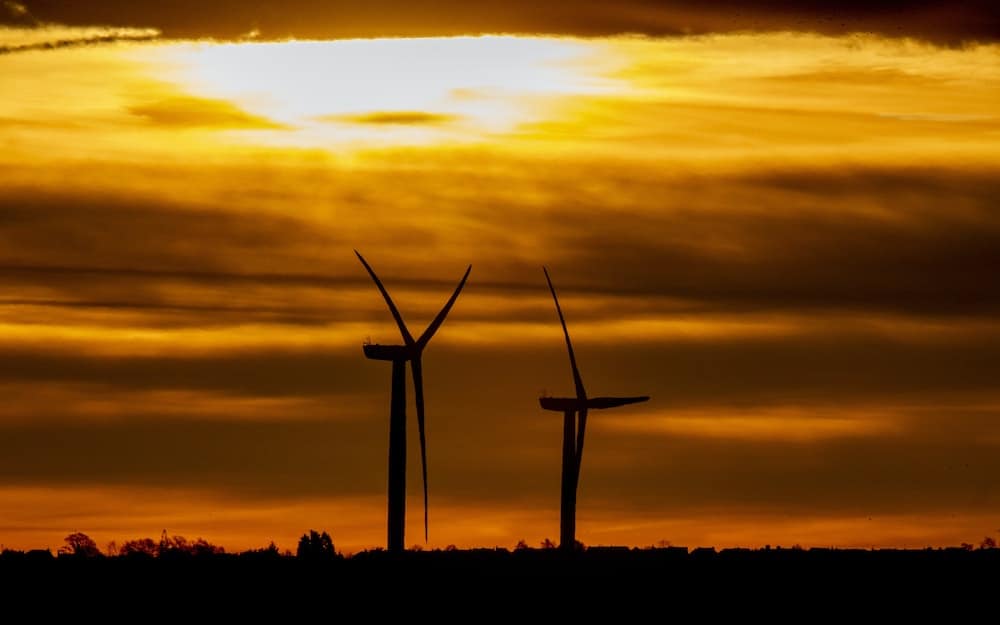
Credit;PA
Renewables generated more than 40% of Britain’s power in the first three months of the year – overtaking fossil fuels for the first time, analysis shows.
Wind farms were vying for top spot with gas in the electricity mix, generating 30.5% of power, just behind fossil fuels which contributed 30.6% between January and March.
Severe winter storms in the wettest and windiest February since records began helped make it first month on record when more electricity was produced by wind farms than gas-fired power stations across the country.
Analysis by academics from Imperial College London for Drax Electric Insights also shows that weekday power consumption fell by 13% as a result of the lockdown which began in late March.
A lack of machinery, computers, lights and heaters being used in industry, offices and schools, and a reduction in electric rail, tram and Tube services led to weekday electricity demand falling to its lowest levels since 1982.
Although domestic power use increased due to people being at home in the day, it is “like living through a month of Sundays” for weekday power demand, while weekends have seen even less electricity needed on the grid, the study said.
The lockdown has seen an impact on carbon pollution, with emissions from British power production falling 35% on the same period last year.
Whether the changes will last after the restrictions lift remains to be seen, but the analysis suggests that with “even a small share of the population continuing to work from home on some days, there could be a lasting impact on electricity demand for years to come”.
Even before lockdown, over the first quarter of the year the grid was cleaner than the same period in 2019.
Record levels of wind power in the stormy conditions helped push down electricity generation from fossil fuels 25% compared with the same period last year.
Emissions per unit of power produced were down 20% on the first quarter of 2019.
The trend is set to continue, with more large offshore wind farms coming online this year.
In periods when wind power dropped in calmer conditions, flexible power stations and large companies reducing demand helped balance the grid, the analysis said.
Two coal-powered plants were retired at the end of March, but before that they burned all their remaining fuel, running continuously for 117 days and pushing up coal generation for the quarter for the first time since 2012.
There are just three coal plants left in Britain, with Drax’s coal unit set to close in March 2021 while the others could shut before the Government’s 2024 deadline.
Britain is currently in a record coal-free run of more than 40 days.
Iain Staffell, of Imperial College London and lead author of the quarterly Electric Insights reports, said: “Britain’s electricity system is under pressure like never before, with both the country’s weather getting more extreme and a global pandemic testing its resolve.
“So far in 2020 we’ve seen companies reducing their demand for electricity to help keep the grid stable when supply from wind power rapidly decreased, and then the Covid-19 lockdown caused many businesses to shut up shop, reducing electricity demand and creating new challenges with oversupply of power.
“Having flexibility within the power system at these critical moments is crucial to keeping Britain’s lights on.”
Related – COVID-19 crisis sees global carbon emissions plummet by 17 per cent